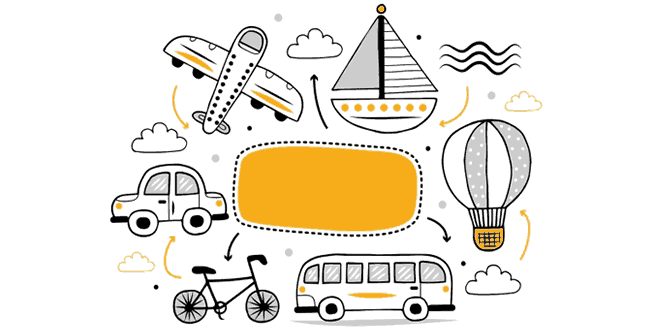Question: Why is communication a necessity of life?
Answer: Communication is an essential requirement of human life. No one can live without interacting with others. Earlier communication between people was less and only face to face.
Now it has increased and the modes of communication have also changed. The increase in population and the change in the modes of communication are the result of increased human movement and transport of materials and goods. Today, we are living in the age of communication, using telephone, television, films and Internet. Even books, magazines and newspapers are the important means of communication. Various means of transport and communication have reduced distances, bringing the world closer.
Question: Name different categories of the means of communication.
Answer: The means of communication are divided into two categories. They are means of personal and mass communication. In the former, we include postcard, letter, telegram, telephone, and now, Internet. The latter includes books, journals, magazines, newspapers, radio, television, and films. These are of two types:
- print media (i.e. books, newspapers)
- electronic media (i.e. radio, television, films, computers)
Question: What is mass communication?
Answer: Mass communication plays a vital role in creating awareness among the people about various national programmes and policies. These provide healthy entertainment as well. Important means of mass communication are radio, television, newspapers including magazines, books and films. These means communicate with several people at a time and hence are called means of mass communication.
Question: Why is railway so important today?
Answer: The railways are the main artery of inland transport in India. It is the lifeline of the country for large-scale movement of traffic – freight and passengers. The railways are 150 years old in India. The total length of railways is about 63,000 km. With this length, India has the second largest railway network in Asia. The Indian railways carry 40,000 lakh passengers and 4,000 lakh tonnes of goods a year. It is the largest public sector undertaking of the country.
Question: The Great Plains has more railways than the Himalayan Mountains. Why?
Answer: The distribution pattern of the railway network in the country has been influenced by physiographic, economic and administrative factors. Level land of the great plains of India, with high density of population and rich agriculture and greater industrial activity, have favored development of railways in these areas. Flood plains of Bihar and Assam, and the rugged topography of the Himalayan region, have very few railway lines. Sparsely populated sandy deserts of Rajasthan and hilly tracts of the Sahyadri are unfavorable for the development of railways.
Question: What are the problems of railways today?
Answer: Railway transport suffers from certain problems as well. Many passengers travel without tickets. They pull chains unnecessarily, which leads to late running of trains. People stop trains, which causes heavy losses to the Railways. Thefts and damaging of Railway property have not yet stopped completely.
Question: Distinguish between Personal Communication and Mass Communication.
Answer: Personal Communication is the means of communication between individuals.
Mass Communication is the means of communication reaching up to the masses, including Doordarshan, radio, press, films, etc. Mass communication plays a vital role in creating awareness among the people about various national programmes and policies.
 Class Notes NCERT Solutions for CBSE Students
Class Notes NCERT Solutions for CBSE Students





